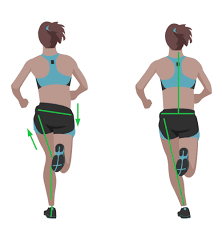Strength Testing with Hip Abduction Holds/Raises
Feb 17, 2018Why Is Hip Abduction Strength Important
Hip abduction is a movement where our leg moves away from the midline of the body or the opposing leg, this movement is primarily produced by our Gluteal muscles (Maximus, Medius, and Minimus).
In upright functions such as walking and running the hip abductors primarily stabilise the trunk and lower limb stopping against frontal, transverse and sagittal plane motions of gravity and momentum and may lead to signs such as hip drop.

What Does The Research Say About Hip Abductor Strength
This movement is extremely important in a sporting or dynamic context as hip abduction can be “associated with increased knee valgus angles during athletic movements” (Cronin et al 2016).
Decreased Hip Abduction strength or excessive hip adduction can be a cause of issues for people with patellofemoral pain (PFP). “Eccentric hip abduction strength that is higher than normal may reduce the risk of PFP” (Ramskov et al 2015).
The single leg abduction exercise when used correctly in a clinical setting can decrease the risk of associated lower limb injuries to the hip, knee or ankle. By performing the activity in a controlled eccentric way it has been shown to decrease the risk to certain injuries as found by Ramskov. D et al (2015).
Some of the highlights from other articles include:
- Reduced hip strength a common feature of hip joint conditions such as hip OA & femoroacetabular FAI.
- In addition, reduced hip muscle strength has been shown to be associated with increased prevalence of lower limb injury in runners (Niemuth et al 2005) & with subsequent acute groin injuries in professional ice hockey players (Tyler et al 2001)
- Reduced hip strength is also seen commonly in those with patellofemoral pain (Rathleff et al 2014, Barton et al 2012, Bolgla 2016)
- “Weakness of the gluteus maximus could also directly contribute to reduced control of hip adduction and in turn greater knee valgus motion during athletic movements” (Cronin. B et al, 2016).
- “Weakness of this primary hip abductor could result in greater hip adduction during landing, which in turn can lead to greater frontal plane knee motion” (Cronin. B et al, 2016).
- “Gluteus maximus and medius, activate eccentrically to control hip and pelvic motion during weight-bearing activities such as running” (Ramskov. D et al, 2015)
How To Perform A Hip Abduction Strength Test

Start the client in a side plank position rest on their elbows either with their feet on the floor or set at a standardized position on a bench or box. Ask the client when ready to elevate their superior leg and maintain a neutral spine position so that all the force only goes through the inferior leg. Time how long the client can maintain this position until failure.
Alternatively, abduction repetitions can be performed, ensuring that the client always achieves a standardized range of motion until failure. Compare from side to side.
Are you measuring Adductor Strength with your patients and clients?
Join the thousands of therapists and trainers worldwide who have stopped guessing and started measuring their patients and clients using Adductor Strength testing and the MAT.
Sign up for our MAT Course today to learn how to use Adductor Strength testing alongside 50+ other objective assessments.
Download Our Measurz App For FREE And Perform, Record and Track 800+ Tests With Your Clients Today.
Want To Improve Your Assessment?
Not Sure If The MAT Data-Driven Approach Is Right For You?
Get a taste of our MAT Course and data-driven approach using the MAT with a FREE module from our online MAT Course.
We hate SPAM. We will never sell your information, for any reason.



